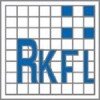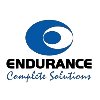Filter interviews by
Dhoot Transmission Interview Questions, Process, and Tips
Dhoot Transmission Interview Experiences
55 interviews found
Interview Questionnaire
4 Questions
- Q1. What is 7qc tool, why we use it ?
- Ans.
7QC tools are a set of quality control tools used to identify and solve quality problems in manufacturing processes.
7QC tools include Pareto chart, cause-and-effect diagram, control chart, histogram, scatter diagram, flowchart, and check sheet.
They help in identifying and analyzing quality problems, determining root causes, and implementing corrective actions.
They are used to improve product quality, reduce defects, an...
- Q2. What ia PPAP and APQP?
- Ans.
PPAP and APQP are quality management systems used in manufacturing.
PPAP stands for Production Part Approval Process and is used to ensure that manufactured parts meet customer requirements.
APQP stands for Advanced Product Quality Planning and is used to plan and manage the design and development of new products.
Both systems are commonly used in the automotive industry but can be applied to other manufacturing industrie...
- Q3. What is pareto?
- Ans.
Pareto is a principle that states 80% of effects come from 20% of causes.
Also known as the 80/20 rule
Used in business to identify the most important factors
Can be applied to various fields such as economics, engineering, and social sciences
Example: 80% of a company's profits come from 20% of its customers
- Q4. How to calculate the OEE?
- Ans.
OEE can be calculated by multiplying Availability, Performance, and Quality percentages.
Calculate Availability by dividing Operating Time by Planned Production Time.
Calculate Performance by dividing Actual Production by Maximum Production.
Calculate Quality by dividing Good Units by Total Units Produced.
Multiply Availability, Performance, and Quality percentages to get OEE.
Top Dhoot Transmission Junior Engineer Interview Questions and Answers
Junior Engineer Interview Questions asked at other Companies
I was interviewed in Jan 2025.
(2 Questions)
- Q1. What is the tolerance ?
- Ans.
Tolerance refers to the acceptable range of variation in a measurement or specification.
Tolerance is important in manufacturing to ensure products meet quality standards
It is the difference between the upper and lower limits of a dimension
For example, if a part is supposed to be 10 cm long with a tolerance of +/- 0.1 cm, it means the actual length can be between 9.9 cm and 10.1 cm
- Q2. What is the lines?
- Ans.
The lines refer to the code of a software program or the physical lines on a production line.
Lines of code in a software program
Lines on a production line in manufacturing
Lines of communication in a team or project
(2 Questions)
- Q1. What is drawing ?
- Ans.
Drawing is the act of creating a visual representation of an object or scene using lines and shapes.
Drawing involves using various tools such as pencils, pens, markers, and brushes.
Different techniques like shading, hatching, and stippling can be used to create depth and texture in drawings.
Examples of drawing include sketches, illustrations, and portraits.
Drawing can be done on paper, canvas, digital devices, or other
- Q2. What is the 5s?
- Ans.
5S is a methodology for organizing a workplace, focusing on efficiency and safety.
Sort - separate necessary items from unnecessary ones
Set in order - arrange items in a logical manner for easy access
Shine - keep the workplace clean and tidy
Standardize - establish guidelines for maintaining the first 3 S's
Sustain - ensure the practices are consistently followed over time
(2 Questions)
- Q1. What is the instrument and types?
- Ans.
Instruments are tools used to measure, observe, or manipulate variables in a specific field.
Types of instruments include measuring instruments, observation instruments, and manipulation instruments.
Examples of instruments include thermometers, microscopes, and pipettes.
- Q2. What is the first angle and third angle?
- Ans.
First angle and third angle are two different methods used in engineering drawings to represent the orientation of an object.
First angle projection is commonly used in Europe and Asia, where the top view is placed below the front view.
Third angle projection is commonly used in North America, where the top view is placed above the front view.
Understanding the difference between first angle and third angle projection is ...
Interview Preparation Tips
Top Dhoot Transmission Npd Qa Engineer Interview Questions and Answers
Npd Qa Engineer Interview Questions asked at other Companies
(2 Questions)
- Q1. Types of transformer
- Q2. Electric connection of house
CNC Machine Operator Interview Questions asked at other Companies
I was interviewed in Jan 2025.
Yes electrical design engineer releted questions
(3 Questions)
- Q1. Self introductions
- Q2. Field related questions
- Q3. Software related questions
Interview Preparation Tips
Design Engineer Interview Questions asked at other Companies
Dhoot Transmission interview questions for popular designations
I applied via Approached by Company and was interviewed in Jun 2024. There were 3 interview rounds.
(2 Questions)
- Q1. What is the meaning of HR what kind of roles and responsibilities done by the HR
- Q2. Why you choose MBA in HR
Talking about how to handle manpower the main topic is woman is a good manager or not
How to manage A large group of people how to solve their problems
Interview Preparation Tips
HR Executive Interview Questions asked at other Companies
Get interview-ready with Top Dhoot Transmission Interview Questions
(1 Question)
- Q1. Tell me about yourself
(1 Question)
- Q1. Explain about tooling
- Ans.
Tooling refers to the process of designing and manufacturing tools or equipment used in production.
Tooling involves creating molds, dies, jigs, fixtures, and other equipment used in manufacturing processes.
It plays a crucial role in ensuring the quality and efficiency of production.
Tooling can be customized based on specific production requirements.
Examples of tooling include injection molds for plastic parts, stamping...
Interview Preparation Tips
Design Engineer Interview Questions asked at other Companies
I applied via Campus Placement and was interviewed in May 2024. There were 2 interview rounds.
(4 Questions)
- Q1. How many experience in their company
- Q2. And relocate to pune process
- Q3. How many plants in dhoot company
- Ans.
The number of plants in Dhoot Company is not publicly available.
Number of plants in Dhoot Company is confidential information
It is not disclosed by the company in public domain
For specific information, contact Dhoot Company directly
- Q4. Which planet is best plant
- Ans.
Earth is the best planet for planting due to its suitable atmosphere, water availability, and diverse ecosystems.
Earth has a breathable atmosphere with the right amount of oxygen and carbon dioxide for plant growth
Abundant water sources on Earth support plant growth through irrigation and natural rainfall
Earth's diverse ecosystems provide a variety of habitats for different types of plants to thrive
(2 Questions)
- Q1. Which field is the best in our company
- Q2. How many quality tester in our company
Quality Tester Interview Questions asked at other Companies
I applied via Approached by Company

(4 Questions)
- Q1. Basic knowledge of tool & die making
- Q2. Basic knowledge of diploma in tool & die making
- Q3. Mould basics. .
- Q4. Press tool basics. .
(1 Question)
- Q1. Types of ejection. .
- Ans.
Types of ejection refer to different methods of removing a component or object from a system or device.
Mechanical ejection - using physical force to push out the component, like a spring-loaded mechanism
Pneumatic ejection - using compressed air to push out the component, commonly seen in airsoft guns
Hydraulic ejection - using fluid pressure to push out the component, often used in industrial machinery
Electromagnetic ej...
Senior Design & Development Engineer Interview Questions asked at other Companies

(4 Questions)
- Q1. Question about all electrical components. And self Introduction
- Q2. What is capacitor, how it's work?
- Ans.
A capacitor is an electronic component that stores and releases electrical energy.
Capacitors consist of two conductive plates separated by an insulating material, known as a dielectric.
When a voltage is applied across the plates, an electric field is created, causing the plates to store energy.
Capacitors are commonly used in electronic circuits for filtering, timing, and energy storage.
Examples of capacitors include ce...
- Q3. What is resistor, working of resistance
- Ans.
A resistor is an electronic component that resists the flow of electric current. Resistance is the measure of opposition to current flow.
Resistors are used to limit current flow, divide voltage, and adjust signal levels in electronic circuits
Resistance is measured in ohms (Ω) and is calculated using Ohm's Law: V = IR
Resistors are passive components that dissipate energy in the form of heat
Different types of resistors i...
- Q4. Question about detail of solar system
(1 Question)
- Q1. Self Introduction
Interview Preparation Tips
Engineering Intern Interview Questions asked at other Companies
(2 Questions)
- Q1. What is your passion?
- Q2. How to improve your skills much more than better?
Interview Preparation Tips
ITI Fitter Interview Questions asked at other Companies
(2 Questions)
- Q1. What is the Transformer
- Ans.
A transformer is a device that transfers electrical energy between two or more circuits through electromagnetic induction.
Consists of two coils of wire, known as primary and secondary coils
Primary coil receives electrical energy and creates a magnetic field
Magnetic field induces a voltage in the secondary coil, transferring energy
Used in power distribution, voltage regulation, and electrical isolation
- Q2. Electrical 8 equipment
Interview Preparation Tips
Top Dhoot Transmission Electrical Engineer Interview Questions and Answers
Electrical Engineer Interview Questions asked at other Companies
Top trending discussions






Dhoot Transmission Interview FAQs
The duration of Dhoot Transmission interview process can vary, but typically it takes about less than 2 weeks to complete.
Recently Viewed
Tell us how to improve this page.
Dhoot Transmission Interviews By Designations
- Dhoot Transmission Graduate Engineer Trainee (Get) Interview Questions
- Dhoot Transmission Electrical Engineer Interview Questions
- Dhoot Transmission Quality Inspector Interview Questions
- Dhoot Transmission Quality Engineer Interview Questions
- Dhoot Transmission Production Engineer Interview Questions
- Dhoot Transmission Design Engineer Interview Questions
- Dhoot Transmission Junior Engineer Interview Questions
- Dhoot Transmission HR Executive Interview Questions
- Show more
Interview Questions for Popular Designations
- Graduate Engineer Trainee (Get) Interview Questions
- Electrical Engineer Interview Questions
- Executive Interview Questions
- Analyst Interview Questions
- Software Developer Interview Questions
- Business Analyst Interview Questions
- Sales Executive Interview Questions
- Accountant Interview Questions
- Show more
Dhoot Transmission Interview Process
based on 44 interviews
Interview experience
Interview Questions from Similar Companies
Fast track your campus placements
Dhoot Transmission Reviews and Ratings
based on 930 reviews
Rating in categories
|
Quality Engineer
323
salaries
| ₹0 L/yr - ₹0 L/yr |
|
Production Engineer
165
salaries
| ₹0 L/yr - ₹0 L/yr |
|
Production Supervisor
98
salaries
| ₹0 L/yr - ₹0 L/yr |
|
Graduate Engineer Trainee (Get)
91
salaries
| ₹0 L/yr - ₹0 L/yr |
|
Design Engineer
86
salaries
| ₹0 L/yr - ₹0 L/yr |

Bharat Forge

Samvardhana Motherson Group

TVS Sundram Fasteners

Ramkrishna Forgings
- Home >
- Interviews >
- Dhoot Transmission Interview Questions















